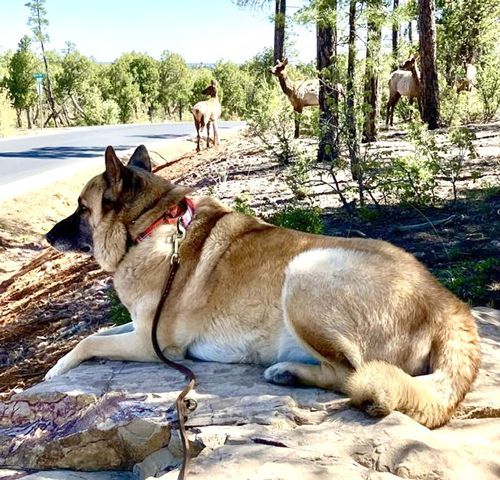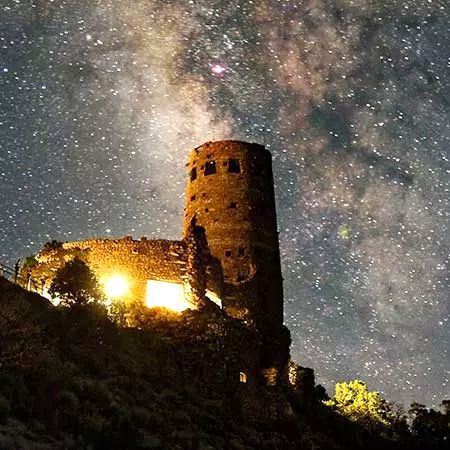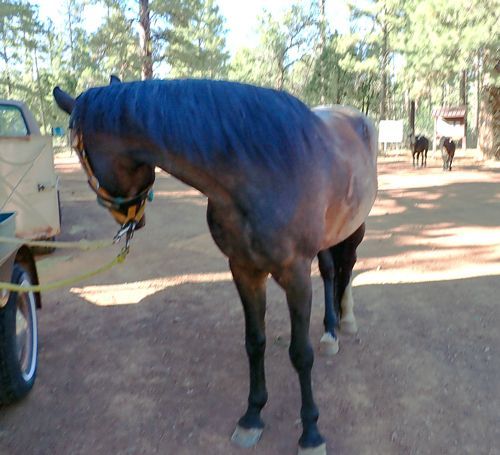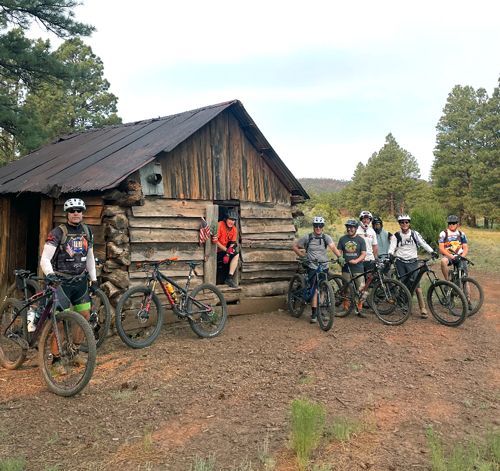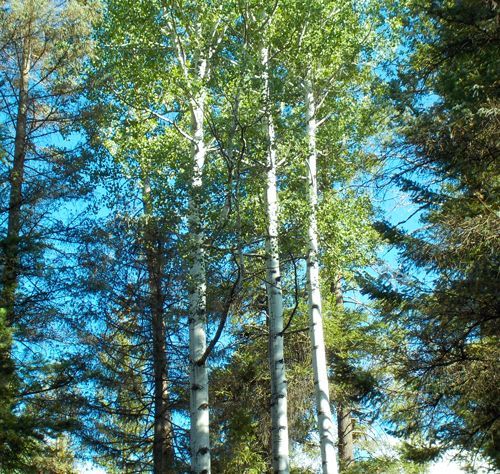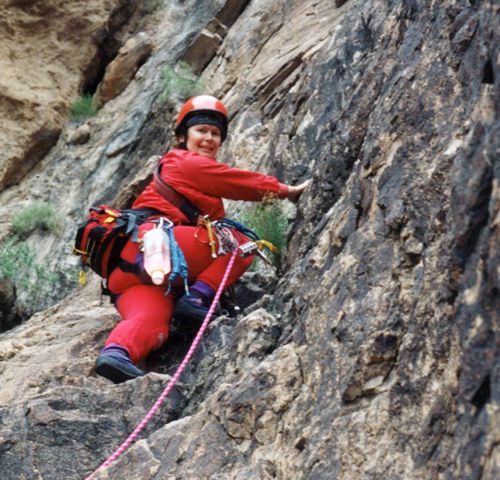Predicting Weather: Science or Folklore
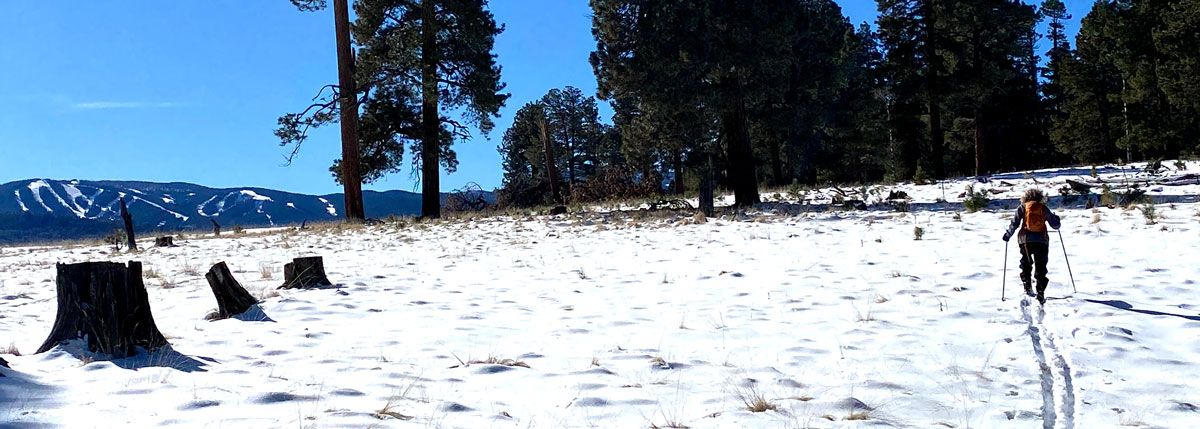
Anne Groebner
I went cross-country skiing last month with some friends and one of the topics that we discussed was what kind of winter we might have this year. That’s a tough question. Some of us based our responses on the weather reports and science, while others based it on faith, hope and miracles. Mountain weather is fickle. It doesn’t always follow what the weatherman reports. Most of the time it’s a guessing game or, if you believe in folklore or Mother Nature, weather forecasts could be predicted by the flowers or the activity of certain animals. It may sound far fetched, but if you think about it, nature has a way of surviving and the actions of its flora and fauna may be a better and more accurate way of predicting weather.
When I think back to last fall, did I notice that there was a larger than normal crop of acorns? This is one of the telltale signs that a cold winter is coming. A thick nutshell predicts a severe winter. If I would have been observant, maybe I would have noticed an abundance of berries along the trails I hiked last summer — another sign that a cold and snowy winter was on the way. Flowers blooming for a second time in the fall or ones that hold onto their blooms late in the season forecast a colder winter — “Flowers bloomin’ in late Autumn, A sure sign of a bad winter comin’.” Popular folklore around the White Mountains is that the height of the sunflowers can predict how much snow we’ll have for the coming winter.
Leaves falling early indicate that winter will be mild. When leaves fall late, winter will be wild! Did we notice when the leaves fell last year? Squirrels have bushier tails in the fall if a cold winter is on the horizon. They also stack their acorns higher in the trees if the snow will be deep — “When squirrels early start to hoard, winter will pierce us like a sword.”
And…“Mushrooms galore, much snow in store. No mushrooms at all, no snow will fall.”
Beavers were important forecasters for Native Americans. The thickness of their coats, amount of body fat, where they hide their food caches, and how they build their winter dens were all used to predict winter weather. Indigenous people believed that the larger and stronger the beaver lodge, the harsher the winter — “When you see a beaver carrying sticks in its mouth, it will be a hard winter — you better go south.”
Coming from Wisconsin, I was always told that seeing a robin (our state bird) meant spring is just around the corner. After many cold winter months in the far north, seeing a robin was reason to celebrate. They also say that seeing a robin close to your house in the fall means the winter will be cold. Wild turkeys perching in trees and refusing to come down means that snow is imminent and if their feathers are unusually thick it’s going to be a hard winter. If a rooster molts before the hen, we’ll have winter thick and thin. If the hen molts before the rooster, winter will be hard.
Insects are predictors too. If bees build their nest in a protected spot, such as in a barn or shed, expect a hard winter. With hornets, the height of their nests will predict the height of the snow. If anthills are high in July, winter will be snowy. The wooly bear caterpillar is a popular weather forecaster. If the brown band in the middle of the caterpillar is wide, winter will be mild.
Other weather predictors — if you believe…
Thunder in the fall foretells a cold winter.
If there is thunder in winter, it will snow seven days later.
The date of the first snowflake tells how many times it will snow.
The first three days of January rule the coming three months.
Listen for the whistle of birds. If you hear it, a frost is coming
Always expect a thaw in January.
As the day lengthens, the cold strengthens — on average, the coldest period occurs about a month after the winter solstice, even though there is more sunlight then. Hence the coldest temperatures typically occur as days are getting longer.
And then there is the Groundhog. Will he see his shadow this year? Groundhog Day is February 2nd. Most likely, it is predicted, he will see his shadow within a few hundred miles of the Atlantic Ocean and in Texas, the Pacific Northwest and the Canadian Prairies where sunshine will prevail. Around our area, however, clouds will be the rule and the “mysterious marmot” will find itself shadowless, which legend holds will mean an early end to winter.
There are so many weather foretellers all around us, from raccoons thick tails and bright bands, spiders spinning thicker webs and entering your house in great numbers, to the early departure of ducks and geese or the early migration of the Monarch butterfly. I’m sure Mother Nature and her many, many forecasters know way more about the weather in their own surroundings than any of us could ever imagine. And yet, if we pay attention and watch how they use their unique intuitive powers, maybe, if we are observant enough, we would know how to answer this impending question every year…”what kind of winter will we have this year?”
Here are ten myths about cold weather
- Cold weather causes the common cold: Viruses cause colds. Staying inside in close quarters helps spread viruses.
- You lose heat through your head: According to Thermophysiologist Gordon Giesbrecht of the University of Manitoba, only 10% of your body heat escapes through the top of your head. However, if you are all bundled up, you lose more body heat through the top of an uncovered head.
- You should rub your fingers and toes when they get cold: Nope. You should wiggle them. Rubbing them will cause tissue damage. If your ears or nose is cold, cover them with a warm hand.
- Coffee and/or brandy is a good way to warm up: No. Caffeine and alcohol may actually speed up heat loss (weather.gov). Try hot chocolate.
- Dehydration is not a danger when you exercise outside in cold weather: False.You still sweat and in cold weather you lose more water through your breath than you would in warmer temperatures. Dehydration can hinder the body’s ability to produce heat.
- If you are stranded and thirsty, you should eat snow: wrong. Eating snow or sucking on ice will lower your body temperature and could lead to internal injuries. Melt ice in a plastic bag between the layers of you clothing (not directly on the skin). Ice melts quicker than the same volume of snow and yields more water.
(https://www.farmersalmanac.com/20-signs-of-a-hard-winter-



